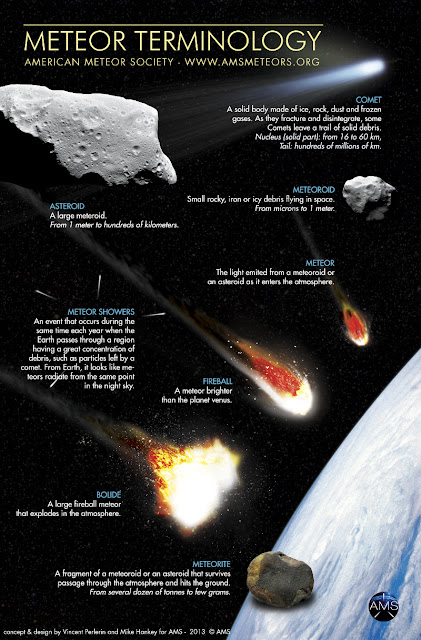Think of the perfect example of a "well-behaved", spiral galaxy, and M81 comes to mind, as, utter perfection. In the opposite direction, think of a galactic, "wild and crazy guy" - and it's M82. Now think of them, as a pair. Talk about an "Odd Couple"!
We are extremely fortunate to have this pair, as nearby as they are, at roughly, 12 light-years. The two, are members of the Ursa Major galactic cluster - a knot, in the Virgo Super-cluster of galaxies, as is our own, "Local Group", of galaxies.
M81 and M82, are among the finest targets for the amateur astronomer with, even, a medium-sized telescope (6"-12"), their magnitude being, approximately, 7th, and 9th, respectively. But they can be detected in smaller scopes, and even, in a good pair of binoculars*, under good sky transparency conditions.
Let's separate the pair out for some analyses:
M81 is a type Sa spiral galaxy. It's, well - perfect. So much so, that it shares the distinctive title of, relatively few galaxies, as a "Grand Design Spiral". Now, that's something to boast about. And I do!
At a diameter of 90,000 light-years, and a distance of 12 million light-years, its relatively large size, and brightness, make it a "stunning" find in the eyepiece. In medium-sized scopes (12+"), the uniformity of its, "oh!-so-homogenous" spiral-arm structure, is notable.
And then, there was M82...
Well; if ever a galaxy looked like it was exploding - M82 - is it. In fact, for a very long time, that's just what astronomers thought was happening. However, there's a little more to it: what's really going on there, is, a massive outburst of star formation - to the point, that, in a sense it is "exploding" - with new stars! Our, Milky Way galaxy (BTW: a barred spiral, or, Sb-type), has a stellar generation rate of about 3, new stars, per year. M81's rate of star formation is something like 33 times that, of ours! (Whew!)
Because of the intense gravitational interaction between M81 and M82 - as well as, nearby, Ursa Major group member, NGC3077 - a small, disrupted, elliptical galaxy - both, M82 and NGC3077 are undergoing, intense, star formation periods in a very short span of time, as galaxies go. Tidal, and other, interruptions are causing large volumes of gases between the three galaxies, to fall inward, toward the cores of M82 and NGC3077. (M81 is, seemingly, immune to this sort of thing, of course!) But, all, three galaxies, are enveloped within interactive streams of gases. Both, M81 and M82, have hosted fairly recent supernovae activity; SN1993-J, in 1993 in M81 - and, SN2014-J, in 2014 in M82.
* Some, experienced, advanced amateurs have been able to detect both of these galaxies, under extremely good transparency conditions using only the unaided eye!
Dale Alan Bryant
Senior Contributing Science Writer
24 hours of Luminance, Red, Green, and Blue image data of M81 and M82 are available for download from Insight Observatory's deep-sky image repository, Starbase.
Read More
We are extremely fortunate to have this pair, as nearby as they are, at roughly, 12 light-years. The two, are members of the Ursa Major galactic cluster - a knot, in the Virgo Super-cluster of galaxies, as is our own, "Local Group", of galaxies.
M81 and M82, are among the finest targets for the amateur astronomer with, even, a medium-sized telescope (6"-12"), their magnitude being, approximately, 7th, and 9th, respectively. But they can be detected in smaller scopes, and even, in a good pair of binoculars*, under good sky transparency conditions.
Let's separate the pair out for some analyses:
M81 is a type Sa spiral galaxy. It's, well - perfect. So much so, that it shares the distinctive title of, relatively few galaxies, as a "Grand Design Spiral". Now, that's something to boast about. And I do!
At a diameter of 90,000 light-years, and a distance of 12 million light-years, its relatively large size, and brightness, make it a "stunning" find in the eyepiece. In medium-sized scopes (12+"), the uniformity of its, "oh!-so-homogenous" spiral-arm structure, is notable.
And then, there was M82...
Well; if ever a galaxy looked like it was exploding - M82 - is it. In fact, for a very long time, that's just what astronomers thought was happening. However, there's a little more to it: what's really going on there, is, a massive outburst of star formation - to the point, that, in a sense it is "exploding" - with new stars! Our, Milky Way galaxy (BTW: a barred spiral, or, Sb-type), has a stellar generation rate of about 3, new stars, per year. M81's rate of star formation is something like 33 times that, of ours! (Whew!)
Because of the intense gravitational interaction between M81 and M82 - as well as, nearby, Ursa Major group member, NGC3077 - a small, disrupted, elliptical galaxy - both, M82 and NGC3077 are undergoing, intense, star formation periods in a very short span of time, as galaxies go. Tidal, and other, interruptions are causing large volumes of gases between the three galaxies, to fall inward, toward the cores of M82 and NGC3077. (M81 is, seemingly, immune to this sort of thing, of course!) But, all, three galaxies, are enveloped within interactive streams of gases. Both, M81 and M82, have hosted fairly recent supernovae activity; SN1993-J, in 1993 in M81 - and, SN2014-J, in 2014 in M82.
* Some, experienced, advanced amateurs have been able to detect both of these galaxies, under extremely good transparency conditions using only the unaided eye!
Dale Alan Bryant
Senior Contributing Science Writer
24 hours of Luminance, Red, Green, and Blue image data of M81 and M82 are available for download from Insight Observatory's deep-sky image repository, Starbase.





